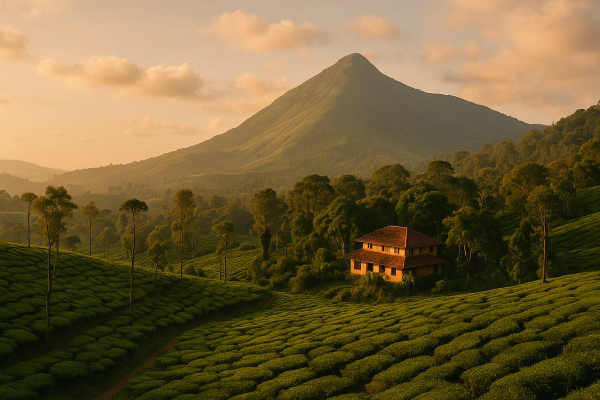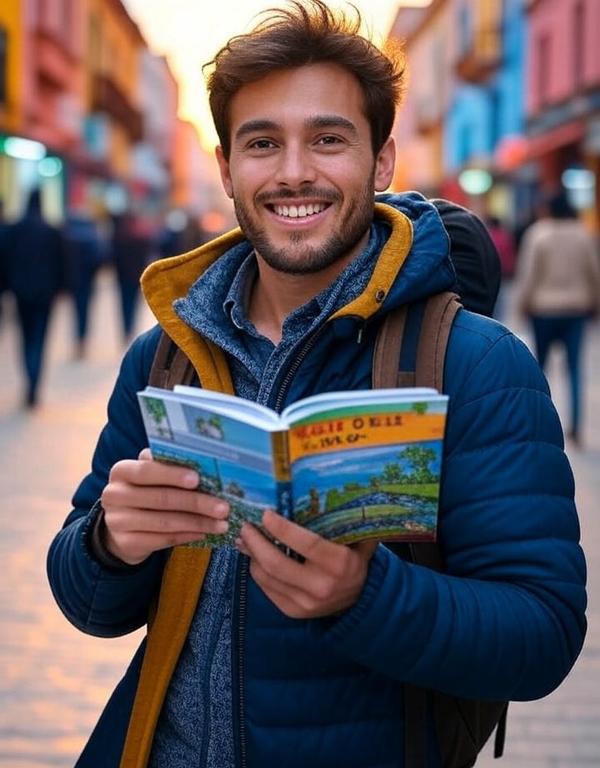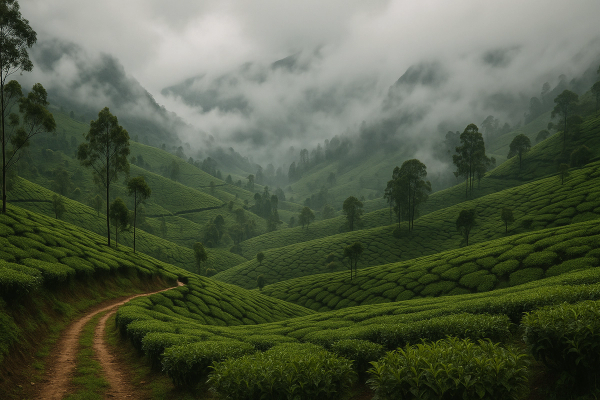
Mumbai. Just Saying It Feels Like Chaos & Amazing Food.#
Okay, so let me tell you about Mumbai. Stepping out of the airport... woah. It’s like sensory overload in the best and craziest way possible. The honking, the humidity, the sheer number of people – it’s intense! But honestly? That energy is exactly what makes this city tick. I went there looking for a proper India travel experience, specifically chasing the legendary Mumbai street food scene, and boy, did it deliver. This isn't your typical polished travel guide; think of it more like grabbing chai with a friend (that’s me!) who just got back and is spilling all the details – the good, the messy, and the delicious. If you plan to visit Mumbai, stick around. This Mumbai travel guide is basically my brain dump of how to survive and seriously enjoy the madness.¶
So, What's Mumbai Actually Like?#
They call it the 'City of Dreams' for a reason. It's this massive, sprawling city on the coast of India. It’s where Bollywood glitz meets colonial-era buildings meets crazy traffic jams meets some of the kindest people you'll meet. It’s a city of HUGE contrasts, you'll see insane wealth right next to heartbreaking poverty. But the vibe? It's ambitious, fast-paced, and somehow, incredibly resilient. Don't expect a quiet, relaxing holiday, lol. Expect vibrant chaos and a city that never really sleeps.¶
When Should You Even Go?#
Timing is kinda key for Mumbai, mostly because of the weather. You've got three main seasons:¶
Monsoon (June - September)#
Pros: Everything is super lush and green, fewer tourists maybe? Cons: It RAINS. Like, really rains. Flooding can happen, transport gets messy. Honestly, unless you love torrential downpours, I'd probably skip visiting then.¶
Winter (November - February) - The Sweet Spot!#
This is when I went, and yeah, it's the best time. The weather is pleasant, like warm but not disgustingly hot. Humidity is lower. It’s perfect for walking around and exploring without melting. It is peak tourist season though, so expect crowds and slightly higher prices.¶
Summer (March - May)#
Hot. And humid. Like, really sticky, sweaty hot. If you can handle the heat, you might find fewer crowds than winter, but sightseeing during the day can be pretty draining. I'd avoid it if possible, tbh.¶
My two cents? Aim for November to February. It's busy, yeah, but the comfortable weather makes exploring so much more enjoyable. Plus, you might catch cool festivals like Diwali around Nov or Christmas/New Year vibes.
Getting There and Not Getting Lost (Too Much)#
Flying In#
Most international flights land at Chhatrapati Shivaji Maharaj International Airport (CSMIA - airport code BOM). It's a huge, pretty modern airport. Getting out can be a bit chaotic. Best bet for getting to your hotel is either a pre-paid taxi from the counters inside the terminal (less hassle with haggling) or using Uber/Ola (India's version of Uber). Download the apps before you go! Expect the ride into South Mumbai (where many tourists stay) to take an hour, maybe way more depending on traffic. Seriously, the traffic is no joke.¶
Getting Around Mumbai - An Adventure!#
Okay, navigating Mumbai is... an experience. Here's the lowdown:¶
- Local Trains: The lifeline of Mumbai. Super crowded, especially during rush hour (avoid if you're claustrophobic!), but incredibly efficient and cheap for covering long distances. It's an adventure in itself. Just watch your pockets and maybe ask someone for help finding the right platform/train. I took it once from Churchgate to Bandra and it was... memorable. Let's just say hold on tight!?
- Auto-rickshaws: Black and yellow three-wheelers. Great for shorter distances. Always insist they use the meter ('Meter se chalo, bhaiyya'). Sometimes they'll refuse or quote a fixed price, especially in touristy areas – try to haggle or just find another one.
- Taxis (Kaali Peelis): The iconic black and yellow cabs. Similar to autos, insist on the meter. Generally more expensive than autos.
- BEST Buses: Red public buses. Very cheap, but can be slow due to traffic and figuring out routes is tricky unless you know the city or use an app like Google Maps (which works surprisingly well for transit).
- Uber/Ola: Generally reliable, air-conditioned, and you know the price upfront. Often my go-to, especially late at night or when I just couldn't face the train crowds again lol.
- Walking: Possible in some areas like Fort and Colaba, but Mumbai is HUGE. You can't walk everywhere. And watch out for traffic! Sidewalks can be... variable.
Where to Crash: Picking Your Mumbai Base#
Choosing where to stay depends on your vibe and budget. Mumbai's neighborhoods are pretty distinct.¶
| Area | Vibe | Price Range | Good For |
|---|---|---|---|
| Colaba | Tourist central, historic buildings, near Gateway of India | $$-$$$$ | First-timers, sightseeing |
| Fort | Charming, colonial architecture, art galleries, cafes | $$-$$$ | Culture lovers, walkers |
| Bandra (West) | Hip, trendy, lots of cafes/bars, celeb spotting? | $$-$$$$ | Younger crowd, foodies, shoppers |
| Juhu | Beachside, more relaxed (relatively!), hotels with sea views | $$-$$$$ | Families, beach lovers |
| Dadar/Lower Parel | More local feel, business districts, some budget options | $-$$ | Budget travelers, experiencing local life |
I stayed in Colaba my first time, which was super convenient for the main sights like the Gateway of India and taking the ferry to Elephanta Caves. It's touristy, yeah, but easy. Next time, I might try Bandra for its cool vibe and amazing food scene. Lots of hostels, guesthouses, budget hotels, and fancy places available everywhere.¶
Booking Tip: Book ahead, especially if traveling during peak season (Nov-Feb). Prices can jump significantly.
Stuff to See & Do (Besides Eating... Mostly)#
Okay, you gotta see some things between meals, right? Mumbai has plenty.¶
The Big Hitters#
- Gateway of India: Iconic archway by the sea. Go early morning to avoid massive crowds. It's impressive, especially seeing the Taj Mahal Palace Hotel right opposite.
- Marine Drive: The 'Queen's Necklace'. A long C-shaped boulevard along the coast. Perfect for an evening stroll, watch the sunset, see the city lights come on. Just sit on the wall and soak it in.
- Chhatrapati Shivaji Maharaj Terminus (CSMT): Formerly Victoria Terminus. It's a UNESCO World Heritage site and just... wow. Stunning architecture. It's a functioning train station, so it's chaotic inside, but worth seeing from the outside, especially lit up at night.
- Elephanta Caves: Ancient cave temples on an island off the coast. Take a ferry from the Gateway of India (about an hour ride). Pretty cool, but go early to beat the heat and crowds.
- Dhobi Ghat: An open-air laundry. It's quite a sight, hundreds of people washing clothes by hand. You can view it from a bridge nearby. (Be respectful if taking photos).
Maybe Some Offbeat Stuff?#
- Banganga Tank: An ancient sacred water tank surrounded by temples in the Walkeshwar area. Feels like a different world compared to the rest of Mumbai. Kinda peaceful.
- Sassoon Docks: One of Mumbai's oldest docks and a major fish market. Go SUPER early (like 5-6 AM) to see the colourful boats bringing in the catch and the chaos of the auction. It's smelly and intense, but fascinating if you're up for it.
- Explore Bandra's Street Art: Wander the lanes of Bandra West, especially around Chapel Road and Waroda Road, to find some cool murals and graffiti.
THE FOOD! Mumbai Street Food Heaven (And More)#
Alright, the main event! Mumbai street food is legendary for a reason. It's cheap, it's everywhere, and it's SO GOOD. Be a little brave, use common sense (eat at busy places, maybe avoid uncooked chutneys if you have a sensitive stomach), and dive in.¶
Street Food You Absolutely MUST Try#
- Vada Pav: The undisputed king. Spiced potato fritter (vada) stuffed in a bun (pav) with chutneys. It's Mumbai's burger. Costs like, 15-25 INR (less than 50 cents!). Try Ashok Vada Pav near Dadar station – famous for a reason.
- Pav Bhaji: Mashed vegetable curry (bhaji) served with butter-soaked buns (pav). Often found at stalls near beaches like Juhu. SO buttery and delicious. Perfect evening snack.
- Pani Puri / Golgappa: Crispy hollow shells filled with spiced water, tamarind chutney, potato, onion. You eat them whole in one go. An explosion of flavor! Find a vendor using bottled water if you're worried.
- Bhel Puri: Puffed rice mixed with onions, tomatoes, potatoes, chutneys, and sev (crispy chickpea noodles). Tangy, crunchy, fresh. Great beach snack.
- Sev Puri: Similar to Bhel Puri but served on small flat puris (crackers).
- Bombay Sandwich: Unique layered sandwich, often grilled, with cucumber, tomato, onion, potato, beetroot, and green chutney. Sometimes with cheese. Surprisingly amazing.
- Kebabs: Especially around Mohammed Ali Road (esp. during Ramadan, but stalls are there year-round). Seekh kebabs, chicken tikka... smoky, meaty goodness.
Foodie Tip: Don't be shy! Point at what looks good. Watch what others are ordering. And carry hand sanitizer! Wash your hands often or use sanitizer before eating.
Beyond the Street: Cafes & Restaurants#
- Irani Cafes: Old-school charm. Go for bun maska (buttered bun) and chai. Try Kyani & Co. or Britannia & Co. (famous for Berry Pulao) in Fort.
- Seafood: Mumbai's coastal, so seafood is great. Mahesh Lunch Home or Gajalee are famous (but pricier) options for authentic coastal Maharashtrian food.
- Modern Cafes: Bandra is full of them. Places like Candies, Prithvi Cafe (at Prithvi Theatre in Juhu), or countless others for coffee, snacks, and people-watching.
Don't Forget the Drinks!#
- Cutting Chai: Small glasses of strong, milky, sweet tea. Sold everywhere. Costs peanuts.
- Sugarcane Juice: Freshly pressed, often with ginger and lime. Super refreshing, but make sure the stall looks clean.
- Lassi: Yogurt-based drink, sweet or salted. Perfect for cooling down.
Quick Practical Tips for Your Mumbai Trip#
Budget Thoughts#
Mumbai can be done on various budgets. Street food is dirt cheap (you can eat well for under 500 INR / $6-7 USD a day). Transport like autos/trains is cheap too. Accommodation is where costs vary wildly. You can find hostels for maybe 800-1500 INR ($10-18) a night, decent budget hotels from 2500 INR ($30+), and luxury hotels... well, sky's the limit.¶
Packing Essentials#
- Light cotton clothes (it's mostly warm/hot)
- Comfortable walking shoes (SERIOUSLY, you'll walk a lot)
- Scarf/shawl (for visiting religious sites, or sun protection)
- Rain jacket/umbrella (if visiting during/near monsoon)
- Sunscreen, hat, sunglasses
- Hand sanitizer & maybe some basic meds (like for upset stomach, just in case)
My Mistake: I didn't bring enough comfy shoes. My feet were killing me after day 2. Rotate your shoes!
Staying Safe & Savvy#
Mumbai is generally safe for tourists, but like any huge city, be aware.¶
- Watch for pickpockets in crowded places (trains, markets).
- Be careful crossing streets – traffic is wild.
- Drink bottled water.
- Agree on prices beforehand if not using a meter (taxis, rickshaws, shopping).
- Dress modestly, especially when visiting religious sites.
A Simple 3-Day Mumbai Whirlwind Itinerary#
Okay, if you only have a few days, here’s a rough plan focusing on sights and, obviously, food.¶
- Day 1: South Mumbai Charm & Chowpatty Eats: Morning explore Fort area (architecture, CSMT outside view), visit Gateway of India & Taj Hotel view. Lunch at an Irani Cafe (Kyani?). Afternoon wander Colaba Causeway market. Evening stroll Marine Drive, end at Girgaum Chowpatty beach for sunset and street food feast (Pav Bhaji, Bhel Puri!).
- Day 2: Culture & Cool Vibes: Morning ferry to Elephanta Caves (allow 3-4 hours total). Afternoon explore Bandra – walk Linking Road (shopping), see street art, maybe visit Bandstand Promenade. Evening chill at a Bandra cafe or try kebabs at Mohammad Ali Road area (short taxi/Uber ride away).
- Day 3: Laundry, Temples & Last Bites: Morning visit Dhobi Ghat (quick view). Then maybe Haji Ali Dargah (check tide timings) or Siddhivinayak Temple. Alternatively, visit Mani Bhavan (Gandhi museum). Lunch somewhere local. Last chance for Vada Pav or your favorite street food find before heading out!
This is just a suggestion, feel free to swap things! Mumbai is best experienced by just wandering sometimes. Got lost near Dadar flower market once, ended up having the best chai of my trip.
Travel Responsibly, Yeah?#
Mumbai's awesome, let's help keep it that way.¶
- Respect Locals: Ask before taking photos of people. Dress modestly, especially outside tourist hubs.
- Waste: Try to minimize plastic use. Carry a reusable water bottle (you can buy large bottles to refill it). Dispose of trash properly (finding bins can be hard sometimes, maybe carry a small bag for trash).
- Support Locals: Eat at local stalls/restaurants, buy souvenirs from smaller shops.
- Ethical Tourism: If visiting places like Dharavi, go with a reputable tour company that focuses on community empowerment, not just poverty tourism.
So, Should You Visit Mumbai?#
Honestly? Yes. A thousand times yes. It’s not always easy – it’s crowded, noisy, can be overwhelming. But it's also vibrant, full of life, history, and some of the most incredible food you'll ever taste. The energy just gets under your skin.¶
My lasting memory? Sitting on Marine Drive at night, the city lights twinkling, eating spicy Bhel Puri from a paper cone, feeling the sea breeze... it was just magic. Messy, chaotic, delicious magic.¶
So yeah, if you're planning some India travel, definitely put Mumbai on your list. Hope this rambling Mumbai travel guide helps you navigate the beautiful chaos and find your own favourite Mumbai street food spot! Let me know in the comments if you've been or if you're planning a trip! Would love to hear your thoughts or tips too. Maybe check out allblogs.in for more random travel thoughts?¶














